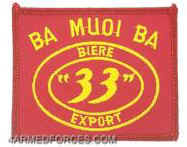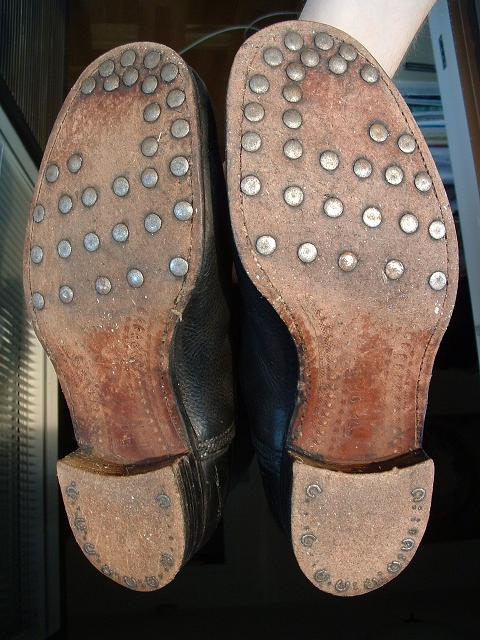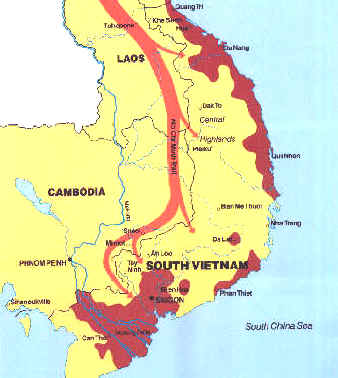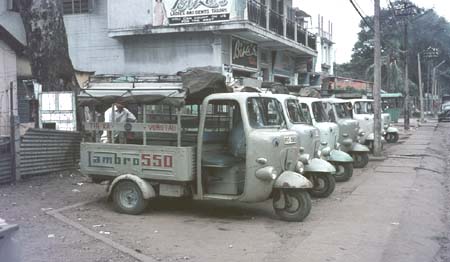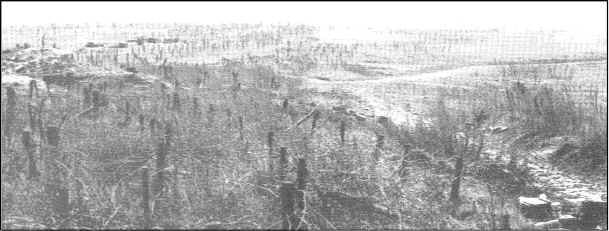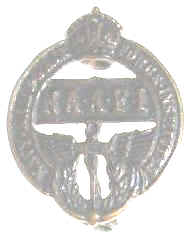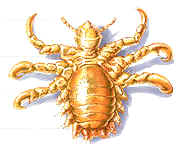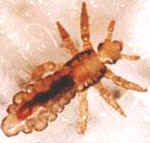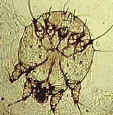 |
|
|||
|
Who was first ashore at Gallipoli? & Frequently Asked Questions, 151 to 200 |
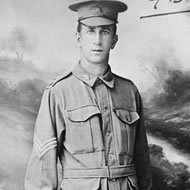 |
No one
knows. No one can ever know. Arguments on this matter are pointless.
Some believe that Sgt. Joseph Stratford (see left) of 9th Bn AIF was,
others point to Lt Duncan Chapman of the 9th Battalion.
|
||||
Formerly in the N.S.W. Scottish
Rifles, Stratford landed at ANZAC with the 9th Battalion ( a
Queensland unit) in the early dawn; there were claims that he was the
first New South Welshman to get ashore. One report said he was killed
attacking a Turkish machine-gun. His body was never found. All that we
can be sure of is that 9th Bn were first ashore. The AWM only say that
"some people believe that Stratford was the first New South
Welshman ashore at Gallipoli". As the 9th Bn was a Queensland
unit and Stratford was a from NSW that claim is probably true.
|
|||||
Frequently asked questions 151 to 200
It is American. GI (pronounced gee
eye) actually is G1 (gee one, using the Roman numeral I). GI is a standard normal fighting soldier.
G2 is
their intelligence section. American soldiers joke that GI stands for
'Government issue". In the same way when you hear the Yanks talk
about "Eye Corps" they are discussing 1st Corps (One Corps) . What happened if a civilian was accidentally killed in SVN? There was a standard method of
handling the matter. It involved payment of what was called solacium
payment ($35 US), a standard amount paid by the U.S. government
to Vietnamese civilians when U.S. forces were deemed involved in or
responsible for a accidental civilian death. For a detailed discussion
of a Solacium payment see Jim Lynch's article, "Solacium
Payment."
What does No 10 mean? (Numbah ten) The unofficial numbering system was No
1, good or the best. No 10 was the worst. Anything could be rated 1
through 10. Later the Diggers introduced Number Welve (12 pronounced by
an Asian) as the worst. Number 10,000 was the worst possible thing you
could imagine in a nightmare. What is post-traumatic stress disorder? It (PTSD) is the development
of characteristic symptoms after the experiencing of a psychologically
traumatic event or events outside the range of human experience usually
considered to be normal. The characteristic symptoms involve
re-experiencing the traumatic event, numbing of responsiveness to, or
involvement with, the external world, exaggerated startle response,
difficulty in concentrating, memory impairment, guilt feelings, and
sleep difficulties. Isn't PTSD just a Vietnam Vets con job? I don't think so and I am not a Vietnam Vet so I have no stake in the matter or personal axe to grind. I see it this way. 1) the blokes that came home from WW1 and WW2 were in many cases badly scarred mentally. I know because I lived for several years with a WW1 Digger who was TPI because of lung damage due to being gassed. In the middle 1950s he still remembered the sound made when he crushed the skull of a wounded German because they had been told "Take no prisoners" and you can't leave an armed man behind you even if he is wounded. So mental scarring was not new to the Viet Nam war. Only the name is new. 2) Read the bit in the answer above that says "events outside the range of human experience usually considered to be normal". Now the blokes that went to WW1 were more used to blood and guts because in a lot of cases they did their own butchering . No pretty packs of Woollies or Coles lamb chops wrapped in plastic for them. Their lamb chops came wrapped in wool and were walking in the paddock. They were much closer to pain & death on a daily basis because even in Civvy Street, people died younger, harder and in much more pain. No antibiotics, no doctor within 40 miles over a dirt track on a sulky, no Medicare to pay the bills. My point is this. The blokes in Viet Nam were further away from "normal experience" than the earlier Diggers. Whether that has any bearing on PTSD or not, ask an expert, but I think it might. Shell Shock and Australian Soldiers - in the Great War - Dr Joanna BourkeSABRETACHE - Vol XXXVI - Jul/Sep1995 - No.3 - pages 3-15.Battle fatigue, psychological stress,
or neurasthenia continue to constitute a significant proportion of
non-fatal casualties in war. It was first seen as a problem of immense
proportions during the First World War. In this article, the debates
surrounding what came to be called "shell shock" will be
examined. In particular, the years between 1914 and 1918 saw a shift in
medical discourse surrounding organic versus psychological
interpretations of ill-health. Despite the incorporation of these
dramatic new medical knowledges into military medicine, the relationship
between psychological illness and malingering remained ambiguous. In the
longer term, men whose bodies were tortured by their minds gained little
- if anything - from the furious debates surrounding shell shock. In
the words of Lieutenant Colonel K J Barrett, these men remained the
"wandering Jews of medicine". What is the difference between a bayonet and a sword bayonet? The original bayonet had no handle, just a
locking ring to lock onto the rifle and they were therefore no use as a
weapon once off the rifle. The later addition of a handle changed them
into a very long knife or a very short sword capable of being used
independently and also as a light machete and with the addition of saw
teeth to the back, as a tool for felling small trees.
Yes, in the bar room brawl sense, and an
effective one at that. Slip it off, (that's easy as there are only 3 to
5 belt hooks and they all have buttons), wrap it around your wrist with
the two brass buckle ends swinging free. Grip it firmly in your hand. It
extends the range of your strike past that of your assailant and a
couple of clips under the ear with the buckles quietens down even the
worst drunken yobbo who thinks it's good fun to punch Digger. If he is
still a problem rake the steel horse-shoe on the heel of your leather
boots down the inside of his shins. While he is hopping around weeping
and wailing give him something to take home for Grandma. He will lose
interest in fighting, I promise you. Senior NCOs and Officers were encouraged to
have a range of subjects and stories they could relate, as the
opportunity arose, in informal meetings of a group of soldiers. They
might be waiting to board a truck that was delayed, waiting to do mess
duties or in any of the hundreds of situations where Diggers are
standing around waiting. These informal talks were called Soldier's 5's,
(as in 5 minutes). What is a Soldier's housewife? A small pack made of cotton and able to be
rolled up, with contents consisting of some spare buttons, a couple of
needles, some thread and other bits and pieces that soldiers used to
make small repairs to the uniforms and kit.
It means "get ready". At times when
attacks might reasonably be expected the whole unit, not just sentries,
"stand to", weapons loaded and cocked and facing to the front
of their area of responsibility. It is always from before dawn to just
after full light and at dusk until full dark. There may be other times
as well during the day depending on circumstances. When it is over the
troops "stand down".
What is a Dhobi boy, an Amah, a Boot Wallah, Munger Wallah etc? In Malaysia and Singapore it was possible to hire very cheap labour. It was usually but not always Indian people who had come to Malaysia looking for work. Amahs were mostly Chinese. The Army allowed this because it helped the local economy. There were various classes and tasks:
This answer is the same as the one above but
instead of Malaysia we are now talking about Papua New Guinea.
He might be an "inside" boy and
do the cooking and cleaning or he might be an "outside" boy
and do the mowing and outside cleaning plus the washing.
When & how did the "Great War" become "the First World War"?
What does "Hurry up and wait" mean? Many things can go wrong with a plan to move a
large body of troops.
The only thing that is not allowed to be late is the infantry. So, if a
move by vehicle or aircraft is planned to start at 0900 the infantry
will be up and moving at 0400. Washed, packed, fed, kitted up, ready to
go at 0800. All of that time the NCOs are yelling "Hurry up".
When the transport does not arrive on time no one is surprised. You just
settle in and "wait". Who was the worst whinger you met as a medic? Most of the Diggers I worked with were pretty good. The battalion had just returned from Viet Nam, had 28 days leave and left for Malaysia. However some of the re-inforcements we got were a touch on the "whinger" side.
We have had 3 rest breaks out of the 140 (1 per hour, 10 hours on the move per day, 14 days) that we can expect. He has presented at every one so far and with 3 different complaints. Now remember I am doing as much walking as the rest. I carry the same gear PLUS the medical kit. I am there to help blokes that need help, not Mummies boys crying because they are away from home. Now the Army had some wonderful stuff for treating diarrhoea called Kaolin powder. It is a mixture of kaolin chalk and opium and it binds you up better than Clag glue or Araldite. 1 pack works wonders. Now remember this bloke says he is constipated and Kaolin
is for diarrhoea. I gave him 3 packs, told him to take them all;.... and
never saw him on sick parade ever again. That was 1969. I reckon by
about 1987 he would have had a bowel motion. I will bet she was a
Beauty. A letter from your wife or girlfriend, received while you are overseas on active service saying that she has found a new bloke and wants to end the relationship with you. They are not uncommon. Many women find that they cannot get through a whole 12 months of not much social life while their lover spends his time having a high time and living it up in beautiful downtown Phuoc Tuy Province getting shot at.
The ones that handled it best pinned the
letter to the Notice Board or Darts Board. The ones who kept it REAL quiet
were a bit of a worry. Train Smash was/is a famous Army recipe
that pre-dates Sweet Chilli Sauce and Tabasco Sauce and all the other
interesting sauces now available. Army food in the 1940s, 50s and 60s was
bland. To liven it up a bit.......Train Smash. Basic recipe.. Take 1 to 2
onions, 1 or 2 tomatoes, a pinch of salt, a VERY good sprinkle of pepper
and start to fry off in a slow pan. When about half ready add a VERY good
dose of chilli (fresh, powdered, dried or mashed, depending on
availability). Add anything that takes your fancy . . . some capsicum,
shallots (spring onions), a bit of celery, whatever. Spoon liberally over
what ever you are having for breakfast, preferably some snags and toast,
and enjoy the day. Although not in common use now it stood for the Australian Infantry Regiment that predated WW1. It was a loose grouping of all the States Infantry Units after Federation and before the formation of the AIF. There were 98 Infantry Regiments and 23
Light Horse Regiments split up over 224 training areas. The system was
designed by Lord Kitchener to overcome the fragmented military system that
was in existence at Federation. They were originally compulsorily trained,
starting at the age of 12, in Junior Cadet units, after 14 in Senior
Cadets and when aged 18 were passed
into the "Active" battalions and regiments where they received a
short annual training for a further seven years. This system started in
1911. Members of the old militia army had been permitted to complete the
three years for which they had enlisted but the only new members allowed
into the army from 1911 was the young draft of 18 year old boys. Of the
old militia only the officers and non-commissioned officers were allowed
to re-engage in the new army. What was the Ho Chi Minh Trail? It is a 3 wheeled cross between a motor bike and a small truck used as a taxi in Viet Nam. Lambro was short for Lambretta, the name of the manufacturer. In WW1 Pioneer battalions performed construction tasks in the forward area not requiring the special equipment of engineers, such as constructing trenches and dugouts although they occasionally acted in the engineer role on tasks such as the construction of bridges. They had a large proportion of tradesmen and were organised the same as infantry battalions. In a pinch they could and did serve as infantry in the front line. In later years the work of Pioneers
was absorbed into the Support Company of the Infantry Battalion. Why was it called The Light Horse? It was called "Light Horse" to distinguish it from the "Heavy Horse" then still in favour in some circles of the British Army. Light horse was traditionally cavalry made up of smaller men on smaller, lighter horses and they were used as scouts, skirmishers, cut and run, fast and furious, dashing glamour units. Heavy Horse were bigger men on bigger slower horses who did a lot of the "smash through" work. At the famous "Charge of the Light (Horse) Brigade" the light cavalry led the way and actually got to the enemy guns. The Heavy Brigade was riding behind, in support, and was withdrawn at the point of victory by a commander not in full possession of the facts. Light mounted units were called various names, Lancers (armed with lances and sabres), Hussars (swords) and Dragoons (short muskets called Dragons, hence their name). They were collectively grouped as Light Horse. Actually the Australian
Light Horse was not cavalry but Mounted Infantry, a relatively new role
at that time. Their job was not to
fight on horseback. It was to ride to the battlefield, dismount and fight as
infantry. The famous Charge
at Beersheba was an anomaly bought on by circumstances. Until 1918
they did not carry sabres or swords but were armed as Infantry with the
Lee Enfield .303 rifle and bayonets. Regardless of the details, they
rode into a glorious part of our history.
Did Australia send 60 Battalions to WW1? Australia raised and trained nearly 70 Battalions but the ones numbered over 60 were never deployed to the front. As well we sent 15 Light Horse Regiments, Pioneer Battalions, Engineers, Artillery, as well as all the support troops. So the common saying of "we sent 60 Battalions" downplays our commitment by a long way.
Exactly what was the Hindenburg Line? 'The Hindenburg Line was a system of defensive positions ten miles deep interwoven with machine guns in concrete emplacements, with layer after layer of barbed wire, numerous anti-tank ditches, and artillery placed in carefully sited positions from which an enemy force could be annihilated as it appeared over the brow of the hill. It also incorporated two canals of the region. The St Quentin Canal [lay in] a deep water-filled ravine interrupted by areas of high ground where the canal ran in tunnels.
The attack came in late September, following a prolonged bombardment
which while it had some effect did away with the element of surprise. In
the end the advance was most successful at the point where success
seemed most unlikely.' Brown, M., 2001 'The Imperial War Museum Book of The Western Front', Pan, Oxford How far did the front line move on the Western Front in WW1? The very first
engagement of the Great War is commemorated by a road-side memorial stone. A company of the 4th Royal Irish
Dragoon Guards, in an attempt to stop the German advance towards Mons
made contact with a company of German Lancers. That stone marks the
spot. The 2 stones are 100 yards apart. Despite the ebb and flow,
the movement was 100 yards, in four years and with 3,049,972 British Empire/Commonwealth casualties plus those of other Allies,
American, Portuguese, Chinese. Can you explain the difference between AIF, AMF, PMF, CMF and AIR? The Australian Imperial Force (AIF) was an expeditionary force created on 15 August 1914 for service overseas in the Great War . All members were persons who voluntarily agreed to serve beyond the limits of the Commonwealth (which was not legally possible to order for existing members of the AMF). The name Australian Imperial Force was chosen by its first commander, Brigadier General W. T. Bridges, as representing its dual Australian and Imperial mission. Today it is generally known as the First AIF, as a Second AIF was created for service in the Second World War. Although the First AIF drew many of its personnel from the then existing full time Permanent Military Forces (PMF) and the part time Citizen Military Forces (CMF) of the Australian Commonwealth Military Forces (AMF), and in some cases there existed a very close relationship between particular AIF and AMF units, the AIF had a completely separate identity. All units of the First AIF were temporary units, raised for wartime service only. After the war, however, the battle honours of the First AIF were handed down to AMF units. some of this wording from Ross Mallett's site (with some additions)
Is Stand Fast the same as Stand To? No. In normal terms Stand Fast means
"Stay where you are, stand up, come to attention, there is an
Officer entering the area". In combat terms it means, "Do not
withdraw. Stay where you are". Stand To means occupy your fighting
position and be ready for an enemy attack. What does HALO/HAHO mean?
Why did we not win in Viet Nam? The Viet Nam war was, in my opinion, lost before it started. The people in the north were intent on invading the sovereign nation that was South Viet Nam to "re-unify" the country, even though that meant they had to break every promise they had made to the world about not doing so. The French took a real kicking trying to help SVN in a "defensive only" war. US President Kennedy stepped in with some Special Forces advisors. Johnson came to power saying that Asian boys should fight their own battles. Later Nixon said something along the lines of 'We will win by not being there'. The REAL problem was that no military man was ever given the command or authority to win the war. At best they were allowed ONLY to defend SVN, never to invade North Viet Nam and kick the living daylights out of the enemy, as we and our Allies have done for centuries. Viet Nam was a politician's war and they did to it (and 50,000 Yanks and 500 Aussies) what they do to everything they touch. It ain't pretty. Imagine, if you can, WW1 or WW2 being fought defending France & Belgium but with the proviso that no Allied soldier could enter Germany under any conditions. It sort of sounds bloody stupid, does it not? Goooooooooooood morning Viet Nam.
Are VC medals really cast from Russian guns captured in the Crimea? Actually, No, even though that is the
commonly held belief. Iain Stewart is a VC expert and he puts it this
way..."Inspired perhaps
by the Queen's remarks, someone had the happy thought that it would be
fitting to take the bronze for the new medals from Russian guns captured
in the Crimea. Accordingly, an engineer went off to Woolwich Barracks,
where two 18-pounders were placed at his disposal. Despite the fact that
these guns were clearly of antique design and inscribed with very
un-Russian characters, nobody pointed out until many years had passed
that the 'VC guns' were in fact Chinese, not Russian, and may or may not
have been anywhere near the Crimea. The Chinese gunmetal proved so hard
that the dies which Hancock's used began to crack up, so it was decided
to cast the medals instead, a lucky chance which resulted in higher
relief and more depth in the moulding than would have been possible with
a die-stamped medal." (Don't
email me, look at his
site and complain to him). Who fired the first angry shots in WW1 and WW2? In both World Wars the first shots
fired by any Commonwealth country, after Declaration of War, were by an
Australian (coastal) Artillery unit. By quirk of fate, in both wars, it was the
same one. Fort Nepean in Victoria. Were there any Unit Citations in the Imperial Awards system? No. The British took a different
approach. If a Unit or sub unit performed "above and beyond the
call of duty" a Victoria Cross (VC) could be awarded. 1 only. It was
awarded to the soldier from the unit chosen by ballot (name out of hat process). 46
VCs have been awarded this way. A member of the RAAF, as in RAAFy.
What is a tracer or tracer round? It is a rifle bullet or other round
that has a small amount of phosphorous on the rear of the shell. While
the shell is in flight it burns brightly (red or green) which allows the
shooter to see his fall of shot. Tracer can also be used to mark the
approaching end of ammo in a magazine. In a 18 round load of a 20 round
magazine bullet No16 should be tracer. It warns the rifleman that he
will soon need to re-load. It can also be used as a "pointer".
For example rather than say "that tree over there is where the
enemy is hiding" when there are about 40 million trees, just put a
tracer round into it and every one can see exactly where you mean.
Not a person This is the radio call
sign used in the RAF and RAAF to indicate; Yes (roger) I will co-operate
(wilco). Why do soldiers use the term "Say Again"? In the Army the word
"Repeat" is kept for the Artillery and it means fire more
shells where you sent the last lot. Other soldiers are forbidden from
asking you to "repeat" something. The proper term is "say
again". If you are on the radio and mishear something the correct
answer is "Say again, over" Was it hard to send messages before the Army had good radio? Yes. Messages were passed by written communication by means of a "runner" who might not get through to the correct place in time or at all. Many runners were killed in action and many were decorated for bravery or distinguished service. Many historians believe that the famous Charge of the Light Brigade was started because of a misunderstood order. Messages were sometimes passed from
man to man. Diggers were under stress, not well educated and sometimes a
bit hard of hearing from the constant shelling. One famous message
started out as "Send reinforcements, we're going to advance"
By the time it got to it's destination it was 'Send 3 and four pence,
we're going to a dance". (3 and four pence refers to 3 shillings
and four pennies (34 cents) and was about half a days pay
for a Digger). Weren't trenches just a long hole in the ground? Occasionally yes but mostly they were
far more complex and sophisticated. There is lots of detail on the page
called Trenches in the
Weapons section. What was the Interim Army and Interim Air Force? During the time, after WW2, that it
took to Federal Government of the day to finalise all the details of the
new Regular Army and the new permanent make up of RAAF in peacetime,
Australia had to have an ongoing Defence Force so these two Units were
set up. The difference was mostly paperwork. People moved from the
Citizens Air Force to the Interim Air Force to the Permanent Air Force
with no obvious change. What is the most highly decorated Unit in Australia's history? That depends on the criteria that you use. Some say the AATTV, who won
However that was spread over about 1,000 blokes over 10 years, longer than any other Unit has been in action. One the other hand Bruce Kingsbury VC and Alan Avery along with Lindsay ‘Teddy’ Bear, Edward Silver, J Whitechurch, Harry ‘Jarmbe’ Saunders, B. G. Wilson, D O’Connor, F.J. Parsons, Neil Gordon and E.R. Jobe were members of 7 Section 9 Platoon, in the 2/14th Battalion which in 1945 was described as the most highly decorated Section in Australian and British military history.
One could
probably find other Units that were the most decorated
Battalion or the most decorated Brigade etc etc etc. As
the section is the basic block on which the Army is built
I would vote for 7 Sect 9 Plt 2/14th Bn What are chats, lice and crabs? Chats are lice. So are crabs. There
are three types of lice --- head lice, pubic (crab) lice, and body lice.
They are all transmitted in the exact same way: close body contact with
an infested person, or contact with shared items like clothing, bedding,
combs and brushes, and yes, even toilet seats can pass these creatures
onto you. They do not jump from person to person though. Lice bite the
skin to feed on your blood, and this is what causes the characteristic
itching. Body lice were a fact of everyday life on Gallipoli and in
France. Crabs were a fairly common result of an association with a
prostitute in SE Asia, although it is possible to get crabs in other
ways, especially if you are the CO or the Padre.
Pubic (crab) lice:
They do have a crab-like appearance, and are slightly larger than head
lice. Many people think they are specs of dirt --- until they move! Crab
lice are found in other hairy areas, too: underarms, eyebrows and
lashes, and facial hair. Body lice:
These actually prefer to live in clothing, and travel to the skin
surface only to feed before going back. You often can’t find them
until you look at clothing (especially seams) for the nits or lice.
Those who don’t change clothes often (homeless or lower social
economic groups) are at higher risk. Though hygiene has little to do
with pubic or head lice, body lice thrive in lower socio-economic groups
where clothes aren’t frequently changed or washed, or
with soldiers who cannot wash or change clothing for tactical reasons. Scabies These
mites are much tinier than lice, and you can’t even spot them.
Furthermore, they spend almost all of their lives burrowed into your
skin. Scabies are recognized by their tell-tale tracks --- small lines
in the skin that look like little scratches, about 1/4 inch long.
You’ll usually find tracks in groups at the wrists, buttocks,
underarms, groin, and especially the webs between the fingers. Scabies
cause intense itching from the eggs and droppings they leave under your
skin Does the Australian Army have snipers? Yes, since WW1 the Australian Army has
had snipers. Sometimes just members of a Unit with a particular skill,
sometimes fully trained specialists. Get the full story on the page
called Sniper. To be effective the sights on a rifle
have to be adjusted to suit the particular soldier so that the point
aimed at is where the bullet actually goes. A rifle set for you
might fire left or right for me. The process is called
"zeroing". Several shots are fired. Where the bullets go is
carefully noted. Adjustments are made. More shots. More
adjustments. When it is right it is referred as being set at Zero, (as
in zero difference between the aiming point and the point of impact). What is you opinion of the Viet Nam Moratorium? I am NOT a Viet Nam veteran, yet I hate and despise (strong words, carefully chosen) with a passion the smug, self righteous, well fed, well protected traitors who thought that attacking soldiers doing their duty and carrying out their orders was in some way a "political protest". Fact . In 1966 when we were well into the war Prime Minister Holt won a landslide victory. The Government majority in the House of Reps. increased from 19 seats to 41. The soldiers,
sailors and airmen did what they were ordered to do by a legally elected
Government. Some long haired slags decided it was fun to attack those
soldiers as they returned from SVN, in the full knowledge that the
soldiers would not be able to retaliate. So too the postmen who refused
to deliver military mail and the commies on the waterfront who refused
to load vital equipment, needed by our front line troops. It is my
opinion that if you took part in those actions you are a traitor. (Strong
word, chosen with care). What is the most evocative thing you have read about Viet Nam? From ‘The Odd Angry
Shot.’ The dying face; tears pouring, nose running, blood spitting.
Remember when you thought, what if he does make it, what if they give
him a nice new tin leg and get him on his feet again, how do you tell
some randy typist that you’re sorry you can’t screw her because you
lost your manhood on a dirt road in a place called Grid Reference one
eight three - one niner six? She’ll look sorry in her sweet suburban
way and she’ll be busy the next time he asks her out.
Copyright © 2003 Ted Harris. All rights
reserved as per Legal page. |
||||||||||||||||||||

